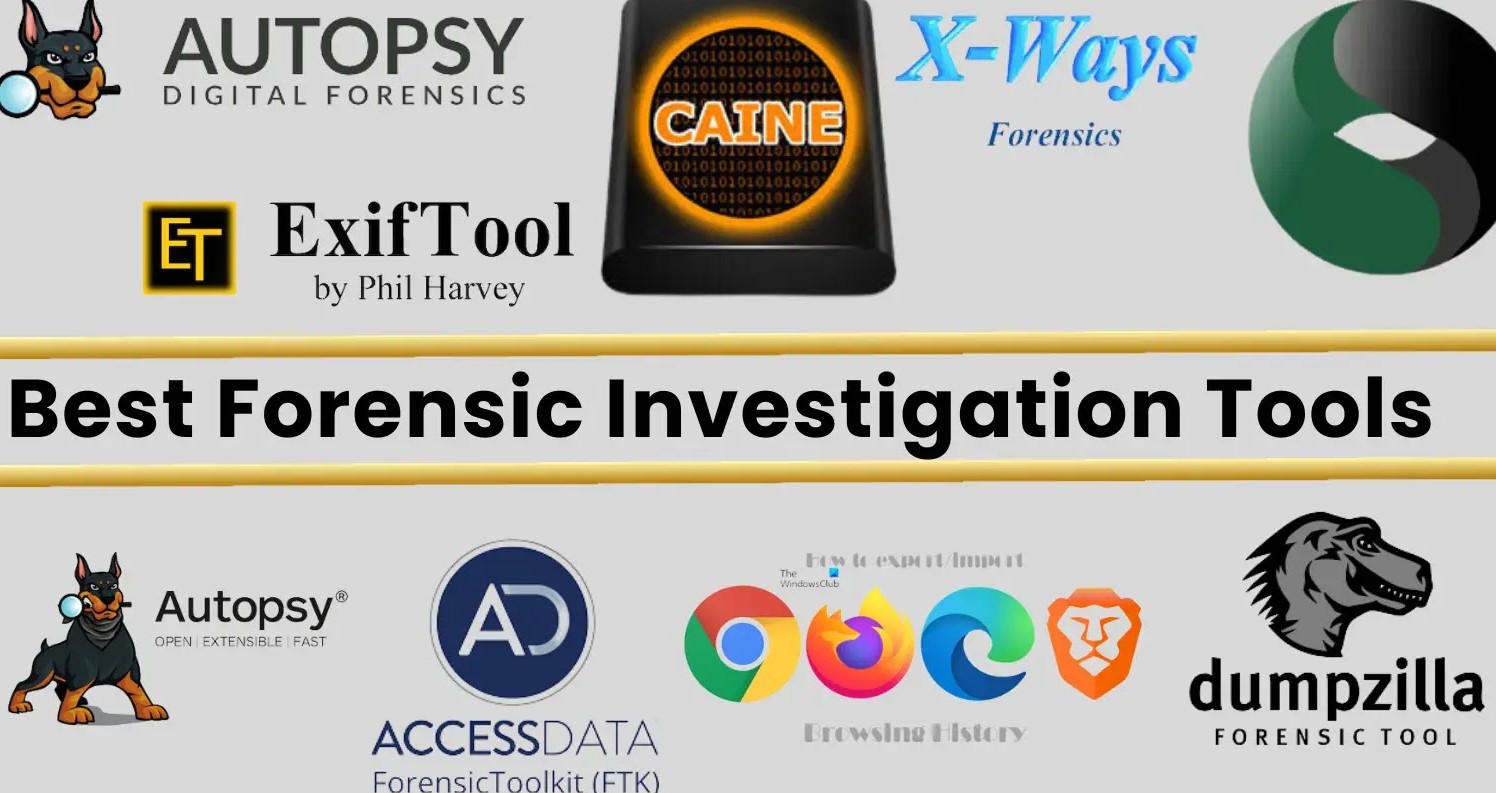
10 Best Digital Forensic Investigation Tools – 2025
The relentless evolution of cybercrime presents a significant challenge to digital security. As threat actors grow more sophisticated, the imperative for robust digital forensic investigation tools becomes undeniable. These specialized solutions are the bedrock for law enforcement, cybersecurity professionals, and corporate investigators, enabling them to meticulously uncover, analyze, and present critical digital evidence. The distinction between a convoluted, drawn-out case and a swift, decisive resolution often hinges on the quality and efficacy of the forensic software deployed.
The Indispensable Role of Digital Forensics
Digital forensics is not merely a reactive measure; it is a foundational pillar of modern cybersecurity and legal frameworks. It encompasses the scientific process of identifying, preserving, recovering, analyzing, and presenting facts about digital information. From reconstructing system failures to tracking down malicious actors, these tools provide the granular insight necessary for effective incident response, litigation support, and proactive threat intelligence.
Understanding the Core Functions of Forensic Tools
Effective digital forensic tools perform several key functions, working in concert to create a comprehensive picture of an incident:
- Data Acquisition: Securely creating exact copies (forensic images) of digital storage media without altering the original evidence.
- Data Recovery: Retrieving deleted, hidden, or corrupted files and partitions.
- Data Analysis: Examining collected data for patterns, anomalies, timestamps, and artifacts that reveal user activity, malicious actions, or system state.
- Reporting: Generating clear, concise, and defensible reports that summarize findings for legal review or internal incident response.
- Preservation: Ensuring the integrity and chain of custody of digital evidence through hashing and secure storage protocols.
10 Best Digital Forensic Investigation Tools – 2025
The landscape of digital forensics tools is constantly evolving, with new capabilities emerging to combat sophisticated threats. While the following list highlights some of the leading contenders, the “best” tool ultimately depends on the specific investigation’s requirements and the investigator’s expertise.
1. Autopsy/The Sleuth Kit (TSK)
Autopsy is a powerful, open-source digital forensics platform that provides a graphical interface to the core functionalities of The Sleuth Kit (TSK). TSK is a library and collection of command-line tools for analyzing disk images and recovering files from various file systems. Autopsy’s modular design allows for extensive customization and integration of third-party plugins. It’s particularly strong for file system analysis and timeline reconstruction.
2. FTK Imager
Developed by AccessData (now Exabeam), FTK Imager is a widely used free tool for previewing data and creating forensic images of hard drives, CDs, DVDs, and other forms of digital media. It supports various image formats, including RAW, E01, and AD1. FTK Imager is indispensable for data acquisition and triage, allowing investigators to quickly assess potential evidence before a full forensic examination.
3. Wireshark
While not exclusively a forensic tool, Wireshark is an essential network protocol analyzer. It allows investigators to capture and interactively browse network traffic data. In a forensic context, Wireshark helps in analyzing network-based attacks, identifying command-and-control communications, and understanding data exfiltration attempts. Its deep packet inspection capabilities are invaluable for network intrusion analysis.
4. SANS SIFT Workstation
The SANS Investigative Forensic Toolkit (SIFT) Workstation is a collection of open-source forensic tools pre-configured on an Ubuntu-based virtual machine. It includes many of the utilities found in The Sleuth Kit, Volatility, and other essential forensic applications. SIFT is praised for its comprehensive suite of tools and consistent updates, making it a robust platform for digital forensic tasks.
5. Volatility Framework
The Volatility Framework is an premier open-source memory forensics framework. It enables investigators to extract digital artifacts from volatile memory (RAM) dumps, which can contain crucial evidence not present on persistent storage. This includes running processes, network connections, open files, and cached data. Volatility is critical for analyzing malware infections and sophisticated attacks that reside primarily in memory.
6. Magnet AXIOM
Magnet AXIOM is a comprehensive digital forensics platform known for its ability to unify evidence from computers, mobile devices, and cloud services. It excels at extracting, analyzing, and reporting on data from a wide array of sources, including social media, webmail, and various app data. AXIOM’s user-friendly interface and powerful artifact parsing make it a strong choice for complex investigations.
7. X-Ways Forensics
X-Ways Forensics is a highly respected, powerful, and efficient forensic analysis suite favored by many experienced investigators. It offers a wide range of features, including disk imaging, data recovery, file system analysis, and advanced search capabilities. X-Ways is particularly known for its speed and its ability to handle large datasets effectively.
8. EnCase Forensic
EnCase Forensic, developed by OpenText, has long been a dominant player in the digital forensics market. It provides robust capabilities for data acquisition, analysis, and reporting across various digital media types. EnCase is recognized for its comprehensive feature set, strong legal defensibility of its output, and its widespread adoption within law enforcement and corporate security.
9. Cellebrite UFED
Cellebrite UFED (Universal Forensic Extraction Device) is a specialized tool primarily focused on mobile device forensics. It allows investigators to extract data from a vast array of mobile phones, smartphones, and GPS devices, even bypassing some security measures. With the prevalence of mobile devices in modern crime, UFED is an essential tool for accessing call logs, messages, contacts, and app data.
10. Paladin Forensic Suite
The Paladin Forensic Suite is a Linux-based live CD/USB distribution designed for digital forensics. It provides a collection of open-source tools for data acquisition, analysis, and recovery, similar to SANS SIFT. Paladin is useful for现场 triage and data collection due to its portability and integrated toolset.
Selecting the Right Tool
Choosing the correct digital forensic tool depends on several factors:
- Case Type: Mobile forensics requires specific tools (e.g., Cellebrite), while network intrusion may necessitate Wireshark.
- Budget: Open-source options (Autopsy, SIFT) offer powerful capabilities without licensing costs, whereas commercial tools provide extensive features and support.
- Investigator Expertise: Some tools have steeper learning curves than others.
- Data Source: Whether the evidence is from a hard drive, a cloud service, or RAM will dictate the tool selection.
Remediation Actions for Compromised Systems
While this article focuses on forensic tools, it’s crucial to outline immediate steps once a compromise is identified:
- Isolate Affected Systems: Disconnect compromised devices from the network to prevent further spread.
- Preserve Evidence: Create forensic images of affected systems before any remediation, ensuring the chain of custody.
- Containment: Implement temporary fixes to stop the active attack, such as blocking malicious IPs or disabling compromised accounts.
- Eradication: Remove the threat entirely, including malware, backdoors, and rootkits. This may involve reimaging systems.
- Recovery: Restore systems to a secure state, using clean backups where possible.
- Post-Incident Analysis: Utilize forensic findings to understand the attack vector and improve security controls. For example, if a vulnerability like CVE-2023-28252 was exploited, ensure patches are deployed.
- Lessons Learned: Document the incident, analyze what happened, and update policies, procedures, and training to prevent recurrence.
Conclusion
The digital forensics landscape is dynamic, mirroring the rapid evolution of cyber threats. Equipping oneself with the knowledge and the right set of tools is paramount for any professional tasked with investigating digital crime. From open-source powerhouses like Autopsy and Volatility to commercial giants such as EnCase and Magnet AXIOM, these solutions provide the necessary capabilities to navigate complex investigations, piece together digital trails, and ultimately contribute to a more secure digital environment. As we move further into 2025, the demand for skilled forensic analysts and cutting-edge tools will only intensify, making continuous learning and adaptation key to success.





